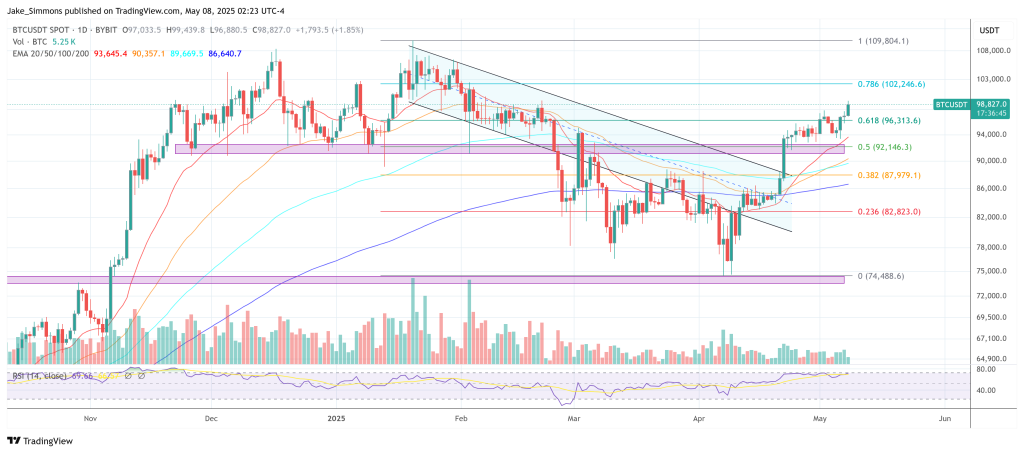Bitcoin’s $100K Surge Fueled by Treasury Liquidity, Not Fed Policy: Market Shockwave
Forget the Fed’s rate theater—Bitcoin’s parabolic rally to six figures is being juiced by old-school Treasury maneuvers. Here’s how bureaucratic money moves trump central bank posturing.
Liquidity Tsunami From Unexpected Source
While analysts obsess over Fed dot plots, the real action’s in the Treasury General Account drawdown. $400B in dry powder flooding markets since January—and crypto’s drinking first from the firehose.
Wall Street’s Liquidity Blind Spot
Goldman’s algo-driven quant funds missed it. BlackRock’s risk models ignored it. But chain analytics don’t lie: stablecoin inflows precede every major BTC leg up. The ’dumb money’ narrative just got flipped.
Regulators Scramble as Paradigm Shifts
SEC chair Gensler now faces an inconvenient truth—macro liquidity drives crypto more than any securities classification. Watchdog bark meets blockchain bite.
Bonus finance jab: Meanwhile, your bank still pays 0.01% APY on savings accounts while charging $35 overdraft fees. Stay salty, legacy system.
Bitcoin’s Macro Logic
Hayes reduces the trading implications to a single variable: the quantity of fiat dollars in circulation. “If there is a bigger quantity of fiat dollars in the world than there were yesterday, bitcoin and crypto will do well,” he said. Price-stability debates, exchange-rate gyrations and even the trajectory of the US Dollar Index (DXY) are secondary. “Bitcoin doesn’t care. All we care about is: Is there more dollars in the system today than yesterday?” That framework underpins his long-running forecast that Bitcoin can reach $1 million before 2028. The target is deliberately round—“We’re humans, we’re dumb, let’s just pick a round number that’s big”—yet Hayes grounds it in compounding fiscal pressures.
Interest on the US national debt was the fastest-growing line item in the most recent Treasury Borrowing Advisory Committee presentation; Social Security, Medicare and defense costs, he argued, will only push borrowing needs higher. “There’s just no way the US government is going to stop spending money,” he said, adding that he expects “an acceleration of money printing and fiscal debasement” once Powell’s term expires in May 2026.
Asked how he is allocating capital, Hayes said about 60%–65% of his liquid portfolio is in Bitcoin, 20% in Ether, with the remainder in a handful of what he called “quality shitcoins.” He highlighted three projects—Pendle, EtherFi and Ethena—as examples of what he calls “fundamental season,” protocols that generate real revenue and share it with token-holders.
The timing of a broader rotation into altcoins, he added, will depend on Bitcoin dominance. “I think we need to get above 70% before we start seeing a rotation back into alts,” a threshold he tentatively places in the $110,000–$150,000 BTC price range.
Hayes was skeptical that the US–China tariff confrontation will meaningfully shrink the bilateral trade gap. Both sides, he said, need a “face-saving announcement” for domestic audiences, but the United States will continue importing Chinese goods, whether directly or through third-countries. Over time, he expects Washington to rely less on tariffs and more on capital-account measures—such as user fees on Treasuries held by foreigners—to re-engineer trade flows without asking US consumers to “buy less stuff.”
A weaker dollar, in his model, is a by-product of those adjustments, not a centrally planned objective. “If foreigners sell less things in dollars and those dollars are not invested in the financial markets, the dollar will go down in value,” he said. That, again, feeds the Bitcoin bid.
At press time, BTC traded at $98,827.


